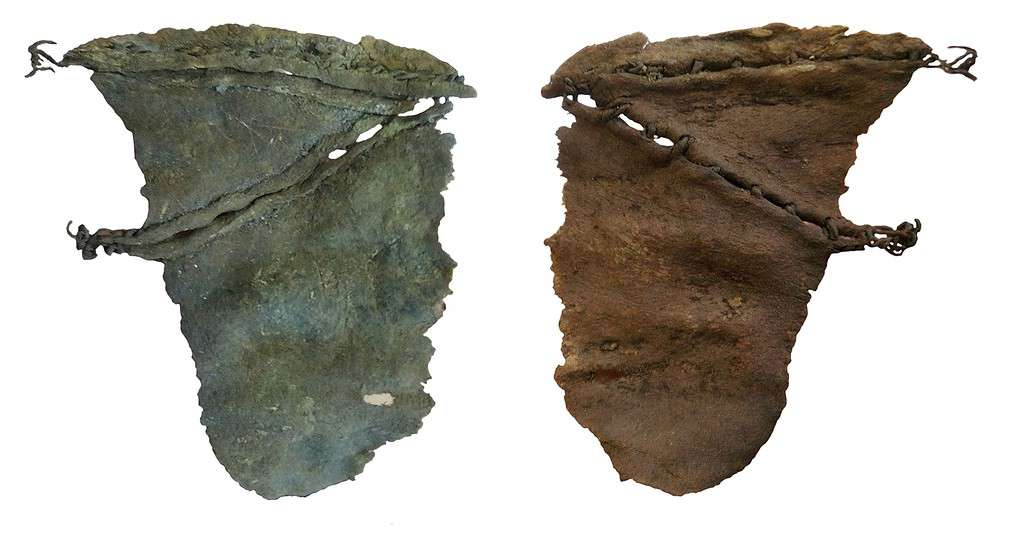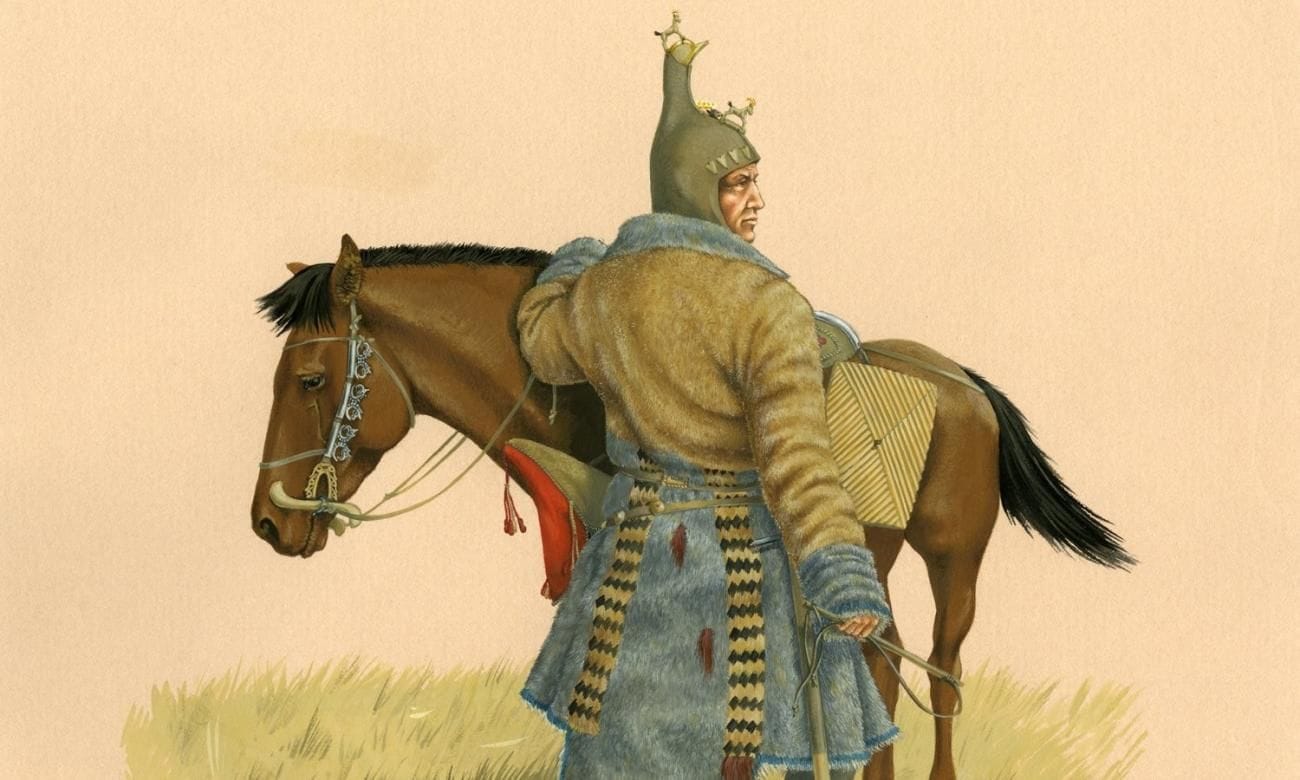Throughout ancient history, the Scythian nomadic warrior tribes instilled fear and terror into the hearts of their enemies who bordered their huge territory in Central Asia — from the Black Sea to China. Ancient sources suggest these people were formidable warriors who were master horsemen and deadly accurate with their bows — even on horseback.
However, what little is known about the Scythians — believed to be active from the mid-8th century BCE to mid-3rd century CE, by which time they settled in Crimea and the Lower Dnipro — comes from foreign accounts. The Scythians never wrote. Instead, modern historians have had to rely on very, very old texts written by Assyrians, Persians, and Greeks.
The most famous and widely cited accounts of the Scythians come from Herodotus, also known as the ‘father of history’ — but also often called the ‘father of lies’ due to his tendency to color historical accounts, sometimes presenting obvious myths and legends as outright fact.
Here’s how Herodotus describes the Scythians as (literal) bloodthirsty warriors at around the 5th century BCE:
“As to war, these are their customs. A Scythian drinks of the blood of the first man whom he has overthrown. He carries to his king the heads of all whom he has slain in the battle; for he receives a share of the booty if he bring a head, but not otherwise.”
“He scalps the head by making a cut round it by the ears, then grasping the scalp and shaking the head out. Then he scrapes out the flesh with the rib of an ox, and kneads the skin with his hands, and having made it supple he keeps it for a napkin, fastening it to the bridle of the horse which he himself rides, and taking pride in it; for he is judged the best man who has most scalps for napkins.”
“Many Scythians even make garments for wear out of these scalps, sewing them together like coats of skin. Many too take off the skin, nails and all, from their dead enemies’ hands, and make thereof coverings for their quivers; it would seem that the human skin is thick and shining, of all skins, one may say, the brightest and whitest. There are many too that flay the skin from the whole body and carry it about on horseback stretched on a wooden frame.”
Garments and coats made out of human skin? That sounds like one of old Herodotus’ classic embellishments. It sounds too outlandish to be true — except it may very well have been.
A new study has now provided evidence that confirms the Scythians practiced the macabre art of fashioning artifacts from the skin of their enemies.
A Grisly Confirmation

Researchers analyzed 45 fragments of leather and two fragments of fur found in 2,400-year-old Scythian burial mounds from Southern Ukraine.
They employed advanced peptide mass fingerprinting techniques to analyze leather fragments. This method can distinguish between animal species based on unique protein markers. The collagen and keratin came from many different kinds of animals, but at least in the case of two artifacts, the skin was undoubtedly from Homo sapiens.
“We only have two examples, but two is better than one or none,” senior study author Margarita Gleba, an archaeologist at Italy’s University of Padua, told National Geographic.
“So there has to be something to what Herodotus tells us, and clearly the Scythians did use human skin to produce cultural artifacts.”

The analysis couldn’t determine which part of the human body the skin came from. It could have been from the scalp or the hands. The Scythians, however, didn’t use human skin throughout their leather garments or quivers. Human skin appeared only in the tops of the quivers while the lower end was made from the hides of cattle or foxes. It was probably more practical to use animal leather most of the time, while human skin from fallen enemies served more as a personal token or trophy for the Scythian warriors.
“I wonder if what lies behind it is that in possessing some part of what you are hunting, be it human or animal, you gain extra power over them. The belief being that your arrows are guided to your [prey] by their being kept in proximity to their skin?” Barry Cunliffe, a professor emeritus of European archaeology at the University of Oxford who was not involved with the research, told Live Science.
“Herodotus also says that the Scythians decorated their horses with the heads of their enemies. Could the thought be that the heads not only displayed your valor but guided you to your [prey]?”
Who were the Scythians anyway?

The Scythians emerged as a dominant force around the 9th century BCE, flourishing until the 4th century BCE. Their realm stretched across the vast steppes of what is now Ukraine, southern Russia, and parts of Kazakhstan. Unlike the sedentary civilizations of the Mediterranean, the Scythians were nomads, moving with the seasons to graze their herds.
Life for the Scythians was intertwined with the horse. These skilled equestrians could shoot arrows with deadly accuracy while galloping at full speed, a feat that astounded their frightened neighbors. Their society was organized around warfare and cattle herding, with wealth measured by the size of one’s herd. They lived in wagons, easily breaking camp and moving entire communities. Scythian mobility made them elusive and formidable opponents.
The Scythians also left behind a rich legacy of art, characterized by intricate goldwork. This artwork often depicted scenes from nature, animals, and mythological creatures, showcasing their deep connection to the natural world and a sophisticated aesthetic sense.
Their burial mounds, known as kurgans, reveal much about their beliefs and social structure. These tombs contained not only the remains of the deceased but also a wealth of grave goods, including weapons, jewelry, and even sacrificed horses, indicating the high status of warriors in Scythian society.
Their encounters with the Greeks left a particularly rich historical record. Greek historians, fascinated by the Scythians’ exotic ways, wrote extensively about them, though often with a blend of admiration and disdain. This cultural exchange was mutual; the Scythians adopted aspects of Greek art and even worshipped some Greek gods.
The decline of the Scythian empire was gradual, resulting from pressure from neighboring peoples and the rise of more powerful states. By the 3rd century BCE, their dominance on the steppes was challenged by the Sarmatians, another nomadic group. Over time, the Scythians disappeared as a distinct entity, absorbed by other emerging cultures.
Herodotus vindicated

Herodotus, a Greek from the city of Halicarnassus in Asia Minor (today’s Bodrum in Turkey), published his landmark Histories sometime between 426 and 415 BCE. This huge body of work aimed to explain the unlikely Greek victory against the much stronger Persian army in the so-called Persian Wars that ravaged the Greek world between 500 and 449 BCE.
But while Herodotus’ writings are invaluable to modern historians, scholars know that you often have to take what he says with an extra pinch of salt. Take for instance his account of gold-digging ants of India, “bigger than a fox, though not so big as a dog”; the winged snakes of Arabia that interfere with the frankincense harvest, or the Arabian sheep with tails so long they need little wooden carts attached to them to prevent their tails from dragging on the ground.
However, some of Herodotus’ accounts that were previously dismissed as hyperbole have been remarkably confirmed as potentially, if not verifiably, true in more recent times. Besides this astonishing revelation of human skin employed as leather for quivers, researchers have suggested that Herodotus’ hilarious account of golden-digging ants could have been a misinterpretation of the Persian word for ‘marmot’, which may have dug up gold dust in the Himalayan foothills. A more recent discovery of cannabis and opium traces in Scythian tombs confirms another account of the Greek historian describing rituals in which the nomads use the herb and “howl in joy”.
This article originally appeared in March 2024 and has been republished after it was updated with new information.
Thanks for your feedback!





















Discussion about this post